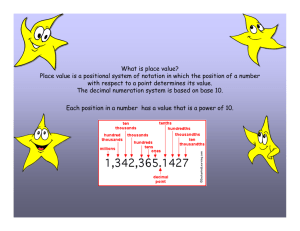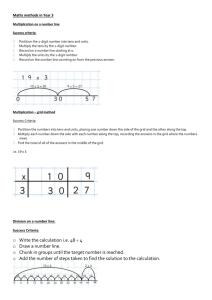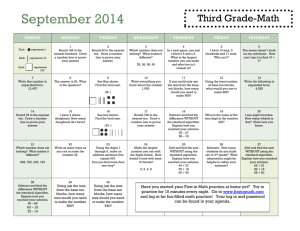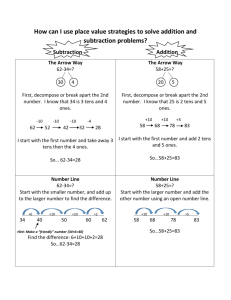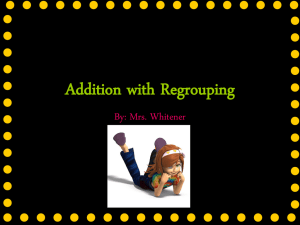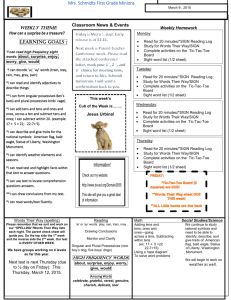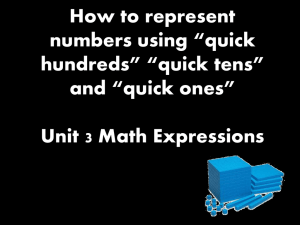Explain patterns and relationships in the place value system
advertisement
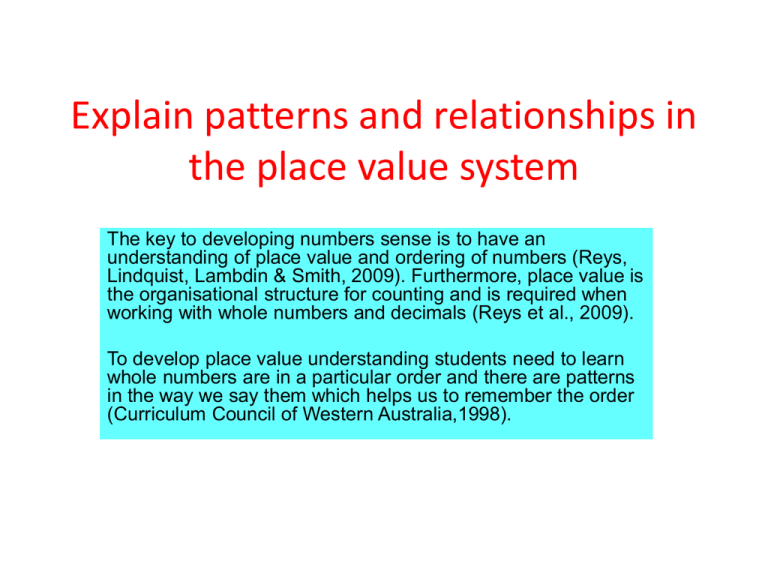
Explain patterns and relationships in the place value system The key to developing numbers sense is to have an understanding of place value and ordering of numbers (Reys, Lindquist, Lambdin & Smith, 2009). Furthermore, place value is the organisational structure for counting and is required when working with whole numbers and decimals (Reys et al., 2009). To develop place value understanding students need to learn whole numbers are in a particular order and there are patterns in the way we say them which helps us to remember the order (Curriculum Council of Western Australia,1998). Hands-on activities, including the use of manipulatives help establish and develop place value understanding. A 100 chart, calculator and the use of ten blocks are great way to help students recognise patterns and relationships. Students are able to see relationships between places and how place value is represented by using 1-9 and how 0 is a place holder that demonstrates lack of quantity. With experiences students learn the constant multiplicative relationship between the places, with the values of the positions increasing in powers of tens, from left to right. Through experiences and language students can develop place value understanding and recognise patterns and relationships. Consequently, students are able to see there are many ways a number can have equal representations e.g. 120 may be 1 x hundred + 2 x tens and is the same as 12 x tens or 10 x tens + 20 ones. Teachers can help develop student’s understanding of patterns in number with activities such Number Jigsaw and Jumbled Charts, whilst Number Peg Up or Washing Line and Number Ladder help support order relation understanding. References Curriculum Council of Western Australia (1998). Curriculum framework for kindergarten to year 12 education in Western Australia. Osborne Park, W.A.: Author. Retrieved from www.curriculum.wa.edu.au/internet/Years_K10/Curriculum_Framework Reys, R.E., Lindquist, M.M., Lamdin, D.V., & Smith, N.L. (2009). Helping children learn mathematics (9th ed.). Hoboken, NJ: John Wiley & Sons, Inc.



